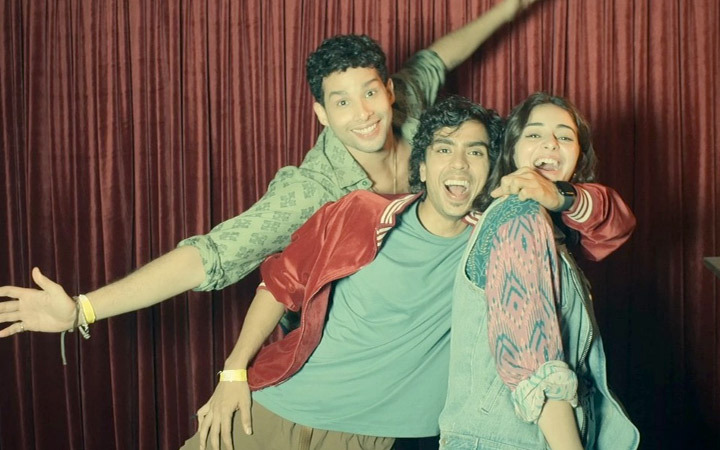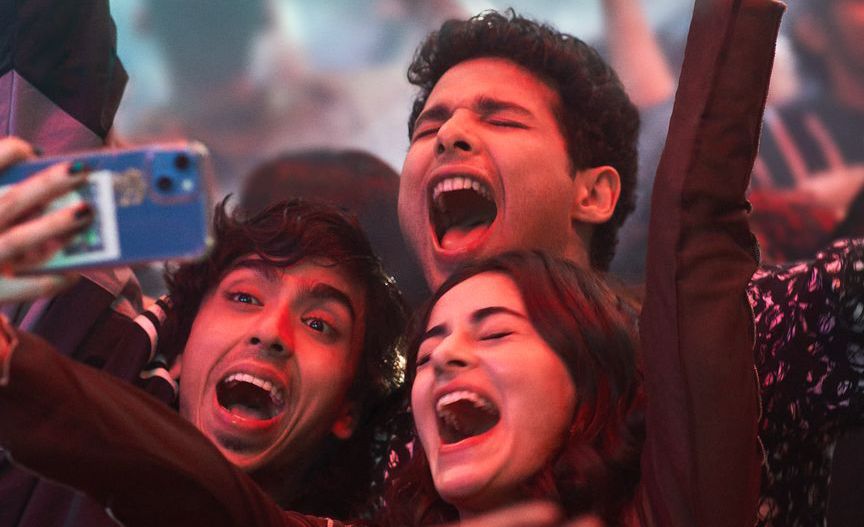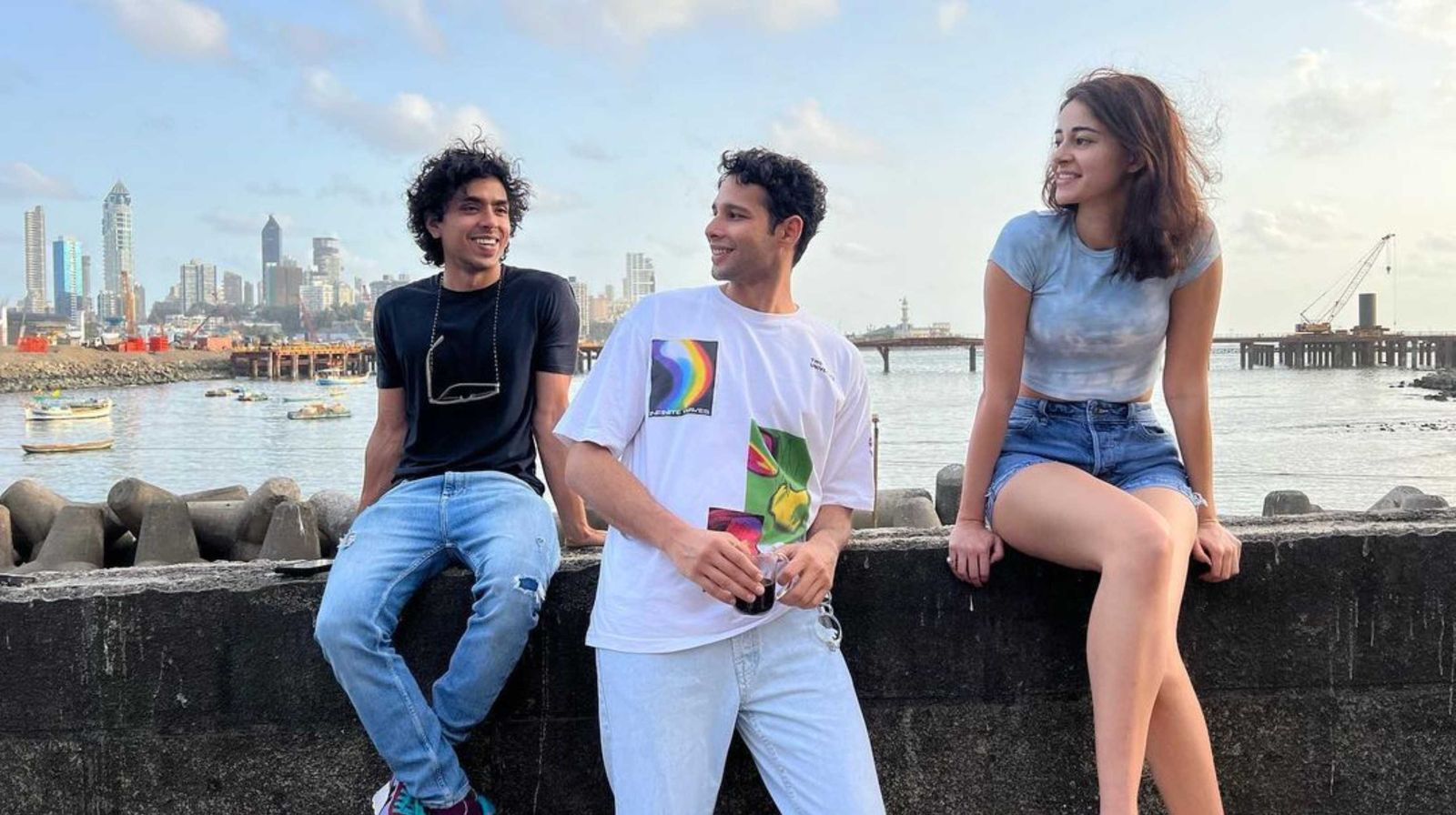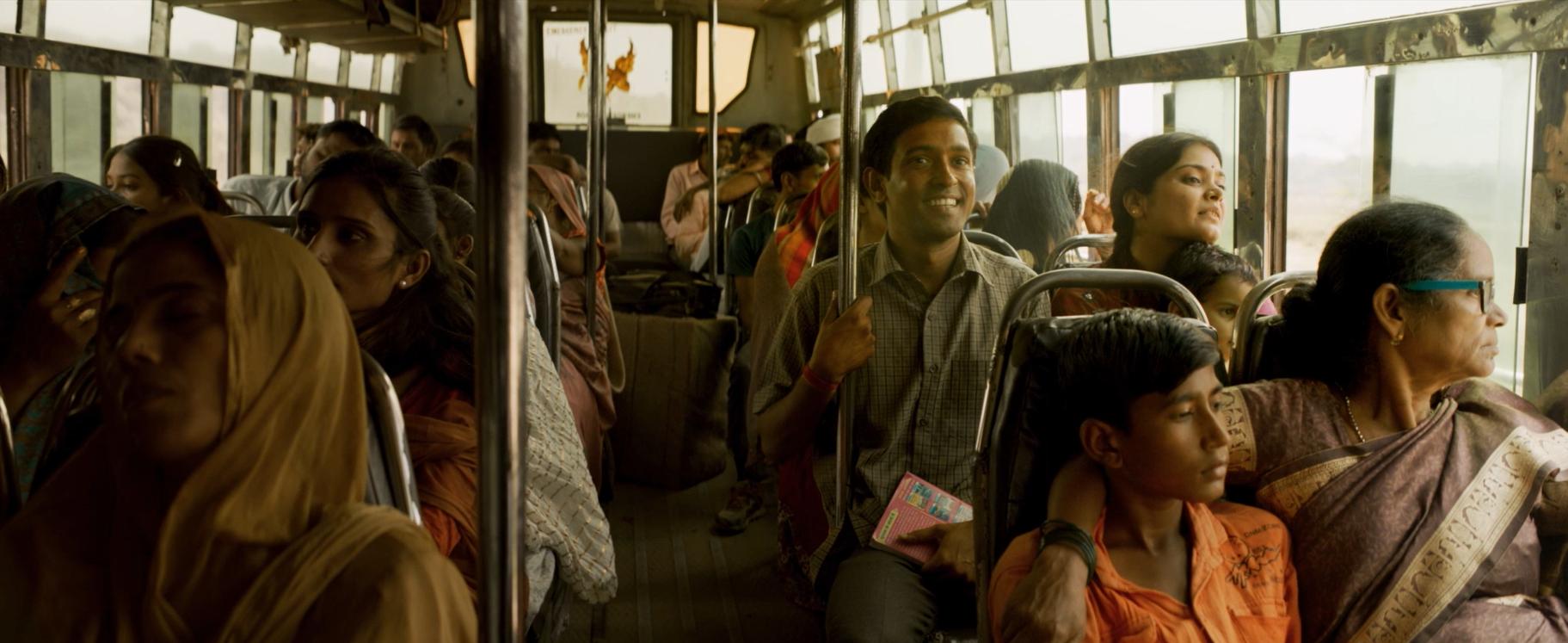As Arjun Varain Singh’s Kho Gaye Hum Kahan approaches its climax, Imaad Ali (Siddhant Chaturvedi), a stand-up comedian, discloses a poignant reality about his life to his open mic audience, a bitter reality that he has concealed from both his friends, Ahana (Ananya Panday), and Neil (Adarsh Gourav). The revelation is so touching that it is challenging to hold back tears. However, I hoped the film would feature more of such moments, allowing us to fully immerse ourselves in the challenges faced by the three close friends who are in their twenties throughout the narrative. No doubt there are ample genuine moments that weave a poignant tale mirroring the trials and tribulations of the millennials attempting to find their footing in a world driven by digital validation. Yet amid their uncertainties and yearnings, a subtle artificiality lingers like a thin veil, preventing us from plunging into the characters’ lives forging a profound connection and fostering a sense of detachment.
The story unfolds over a year, encapsulating the transition from one New Year celebration to the next. Imaad, the son of a wealthy businessman, grapples with establishing emotional connections with women. At his father’s insistence, he reluctantly attends a therapy session. Every time his luck takes a turn for the better on the dating app Tinder. Imaad shares a spacious flat in South Mumbai with Ahana, a close school friend. She is an MBA graduate working in a company and faces the frustration of not receiving the recognition she deserves. Her three-year boyfriend, Rohan, expresses a desire for a break as he’s drawn to another girl. Neil, another friend of Imaad and Ahana, works as a gym trainer and aspires to open his studio. He harbors a secret relationship with Lala (Anya Singh), a popular influencer whom he trains. One evening Ahana decides to quit her job to assist Neil in setting up his gym, and Imaad decides to invest in the project. A strain surfaces in their long-standing bond when Imaad humorously critiques Neil’s relationship with Lala during one of his comedy shows. This concerns Ahana, who left her job to join them in opening the gym. The unexpected tension jeopardizes not only their friendship but also the collaborative venture they had envisioned.

Kho Gaye Hum Kahan is a vibrant and glossy character-driven drama that initially unfolds as a perspective on the frenzy of social media. Singh and his co-writers Zoya Akhtar and Reema Kagti meticulously portray how the characters’ reliance on social media becomes a quest for self-definition. It delves into themes of loneliness and the excessive self-absorption commonly associated with the virtual realm, unraveling the intricate web of connections between the characters and the digital world that shapes their identities. Ahana finds herself plunged into despair and anxiety when she discovers that Rohan is romantically involved with a woman boasting a considerable following on Instagram. In an attempt to alleviate her emotional turmoil, she resorts to posting a curated photo of herself with a monochromatic filter and a quote on loneliness. The subsequent flood of notifications, messages, likes, and comments on her post brings her a sense of bliss. In another scene, the film highlights the impact of social media on individuals’ self-perception when real-life celebrity Malaika Arora shares a story tagging Neil. This simple act catapults Neil’s number of followers to unprecedented heights. Imaad, grappling with his aversion to committed relationships, navigates the complexities of dating apps, finding a source of pleasure in this digital pursuit. Meanwhile, Lala, in a bid to create a facade of an impressive life for her followers, invites Imaad and Ahana to her birthday celebration and orchestrates photographs that paint a misleading picture. Simran (Kalki Koechlin) is a photographer who connects with Imaad through Tinder. Engaged in a project titled ‘The People of Tinder,’ she captures images for an upcoming exhibition. What sets her character apart is the stark contrast she introduces – she photographs individuals from the digital age using an analog camera. Notably, she opts to develop the photos chemically, eschewing the common practice of applying filters in the digital realm. Being older than Imaad, she becomes a liberating force, helping him break free from the long-held shackles that have constrained him.
The overall viewing experience of the film fails to coalesce into a cohesive narrative and instead feels like a series of transient moments akin to extended Instagram reels. The scenes lack the longevity needed to establish a deep emotional connection, passing by fleetingly like a gust of wind meant to rustle rather than evoke a lasting stirring effect. Neil faces a stalker who has inappropriately tagged Lala without her consent, issuing threats unless he changes his behavior. While Neil’s response leaves an impression on Lala, their storyline remains unaffected by this act of courage. The romantic interlude between Imaad and Simran lacks the anticipated fireworks and a more captivating connection. Ahana’s lifestyle is portrayed in a way that hardly hints at the financial strain one would expect, given her circumstances. Neil’s seemingly effortless hacking of Lala’s account, despite multiple attempts, raises eyebrows and fails to convince. The strained relationship between Neil and his father is portrayed in a somewhat predictable and clichéd manner. On a different note, when Ahana’s mother advises her against rushing into marriage, it introduces a refreshing perspective on how mothers are typically portrayed in Hindi cinema. However, this novel take on maternal guidance somehow fails to create the desired impact, devoid of a deeper resonance. Furthermore, the three primary characters’ diverse religious backgrounds could have been explored to add a layer of complexity, promising a narrative depth yet to be plumbed. Even the film ends with a voice-over that comes across more like an uplifting pep talk.

Tanay Satam‘s cinematography uses soothing color tones to weave emotions into every scene. His lensing delicately frames the characters within the intimate spaces of their rooms, the pulsating energy of the gymnasium, and the captivating allure of stages with a visual symphony that not only captures but accentuates the claustrophobic essence of individuals ensnared in a world beyond their control. Nitin Baid‘s editing strategically weaves one scene seamlessly into the next, orchestrating a rhythmic cadence synchronizing with the emotional pulse of the characters and the overarching narrative. Sid Shirodkar‘s background score delicately balances and elevates the tempo and intensity of each scene with a delicate finesse.
Ananya Panday breathes life into the character of Ahana, skillfully portraying her as a woman with vulnerability yet undeniable strength and intricacies who refuses to succumb to victimhood, delivering one of her most accomplished performances. As Imaad, Siddhant Chaturvedi presents a confident demeanor, yet beneath the surface lies a vulnerability. He captures the essence of his character with charming finesse imbued with sheer confidence. Adarsh Gourav seamlessly injects his character with enthusiasm, adding emotional vibrancy to Neil. He embodies a muscular and robust individual who has forged his career through unwavering determination. Nevertheless, a darker side emerges as he occasionally makes crude comments on others’ posts when his pride is wounded. In her brief appearance as Simran, Kalki Koechlin shines brightly on screen. Meanwhile, Anya Singh, portraying Lala, is reduced to a trite character as an influencer with gold-digging tendencies, yet she delivers it with confidence.
Kho Gaye Hum Kahan delves into the intricate complexities of modern life in an era dominated by the virtual realm of existence. It showcases Singh’s commendable potential offering glimpses of promise. Although it serves up a substantial narrative feast, it falls short of attaining satisfying coherence, leaving untapped potential in its wake.
Kho Gaye Hum Kahan is currently streaming on Netflix.



